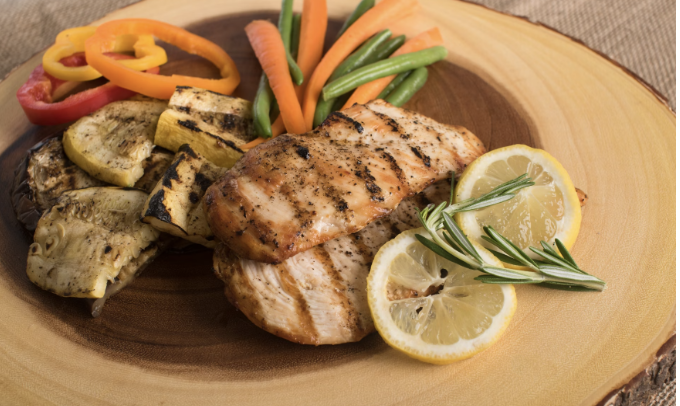What to Eat While On Weight Loss Medications
~Written by Archi Dasgupta
Reviewed by Shannon Grant-Hailey, RD, CDN
Content:
1) Why Nutrition Still Matters on GLP1s
2) Key Nutrition Goals While on Ozempic
3) The Takeaway
Why Nutrition Still Matters on GLP1s
When you’re taking weight loss medications like Ozempic, what you eat becomes more important than ever. These GLP-1 receptor agonists work by slowing down digestion and signaling the brain to feel full for a longer period, thereby helping to reduce appetite and overall food intake.
While this effect can support weight loss, it also means that your body is receiving fewer opportunities to absorb the nutrients it needs. With a smaller appetite, every bite counts. That’s why it’s crucial to choose foods intentionally—focusing on nutrient-dense options that support muscle maintenance, stable blood sugar, and overall health.
Without thoughtful eating, there’s a real risk of malnutrition, dehydration, or muscle loss over time. Serious health conditions can occur such as muscle atrophy, which often require hospitalization and physical therapy.
Did you know only a small percentage of individuals on weight loss medications have met with a dietitian? Unfortunately, this puts them at a high nutritional-risk for nutrient deficiencies which are often overlooked and can be detrimental. This guide will help you understand how to fuel your body wisely while on Ozempic so you can feel your best and make the most of your treatment.
Key Nutrition Goals While on Ozempic
Lean Protein
Protein is a vital component of your nutrition, especially when you're on medication. It plays a key role in building and repairing muscles, as well as maintaining strong bones. While general guidelines recommend around 60 grams of protein per day, your individual needs may vary, so it's best to consult with Nutrished to determine the right amount for you.
Keep in mind that during weight loss, you’re not only shedding fat but also losing muscle mass, which is something you want to minimize. Prioritizing protein in your diet can help preserve muscle while supporting your overall health.
Recommended Protein Sources:
100g Grilled Chicken Breast – 31g protein
1 cup cooked Lentils – 9g protein
1.25 cups Greek Yogurt – 20g protein
1 scoop Protein Powder – ~20–25g protein (varies by brand)
High Fiber Foods
Eating high-fiber foods can help you feel fuller for longer, which may reduce overeating while you're on medication. Fiber also supports healthy digestion and can help regulate blood sugar levels. Since some medications may suppress your appetite or cause a calorie deficit, incorporating fiber-rich fruits and vegetables can help bridge that nutritional gap and keep your energy levels stable.
Recommended High-Fiber Sources:
Chia seeds
Flaxseeds
Chickpeas
Raspberries
Healthy Fat
Unsaturated fats—often referred to as "healthy fats"—play an important role in supporting heart health and helping to balance blood sugar levels. Like fiber, they also help you feel full for longer, which can reduce unnecessary snacking or overeating. While there’s no strict daily requirement, it’s beneficial to include small amounts of healthy fats as part of a balanced diet.
Recommended Sources of Healthy Fats:
Nuts (e.g., almonds, walnuts)
Avocados
Seeds (e.g., chia, flax, sunflower)
Vegetable oils (e.g., olive oil, canola oil)
Whole Grains and Starchy Vegetables
Incorporating whole grains and low-glycemic index (GI) starchy vegetables into your meals can help prevent blood sugar spikes and keep your energy levels steady throughout the day. These foods provide essential nutrients that may be lacking, especially if your medication impacts your appetite or diet. Aim to have whole grains and low-GI starches make up about ¼ of your plate at each meal.
It’s important to choose low-GI options because high-GI carbohydrates are rapidly digested and can cause quick spikes—and crashes—in blood sugar levels.
Recommended Whole Grains:
Brown rice
Quinoa
Oats
Whole wheat bread or pasta
Barley
Recommended Low-Glycemic Starchy Vegetables:
Sweet potatoes
Lentils
Butternut squash
Chickpeas
Green peas
The Takeaway
While taking GLP-1 medications like Ozempic, nutrition becomes more important than ever. Choosing high-protein, high-fiber, healthy fat, and low-glycemic whole food options can help preserve muscle, stabilize blood sugar, and maintain energy levels—despite a reduced appetite. Every bite matters, so make it count.
Have questions or need help personalizing your nutrition plan? Reach out to Nutrished—we’re here to support you.
